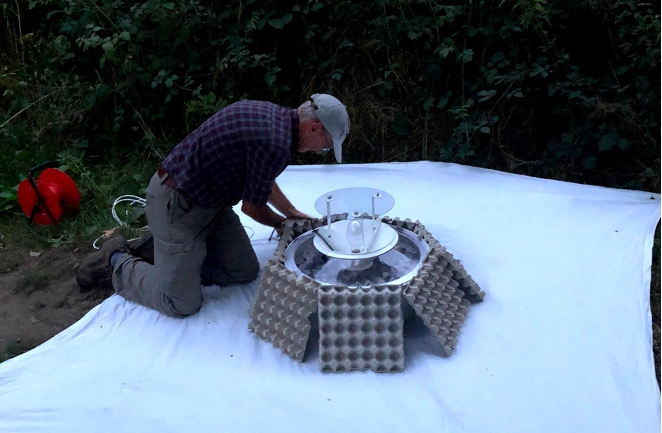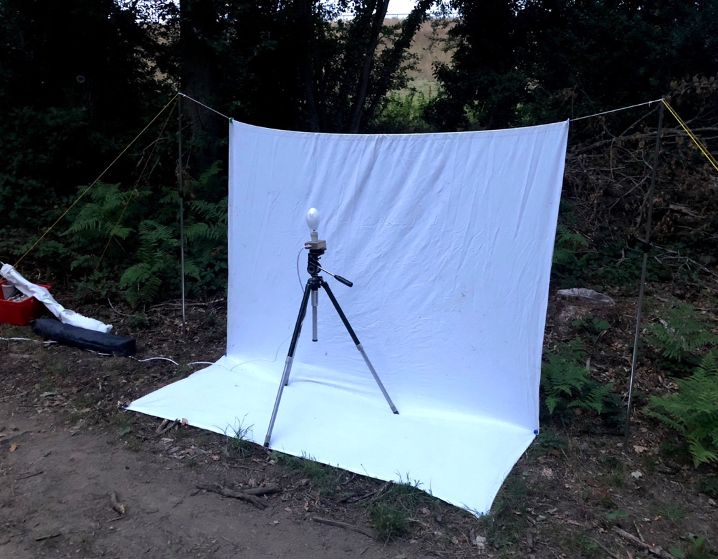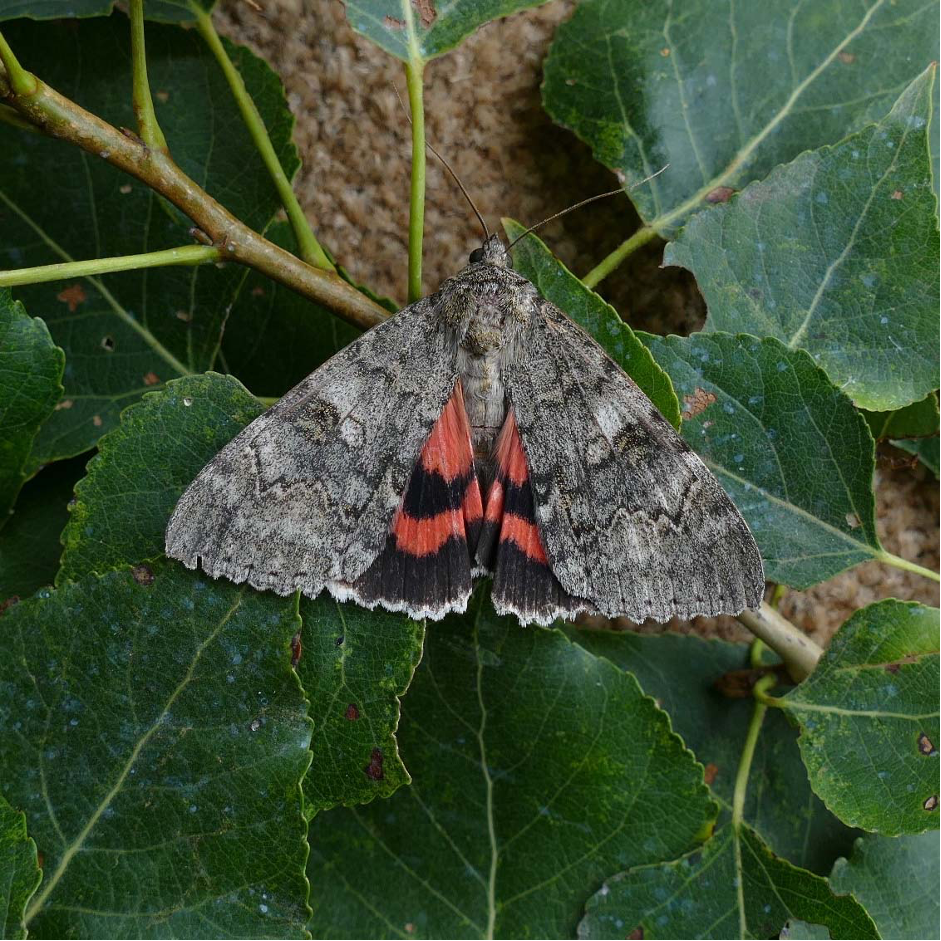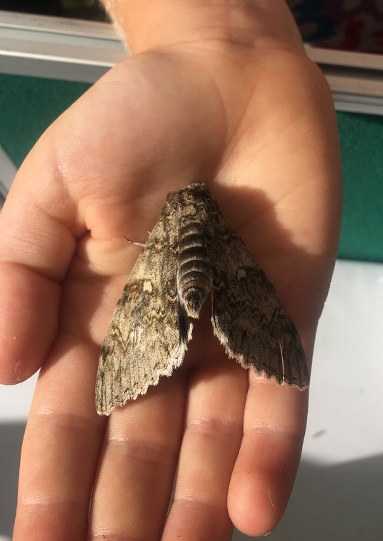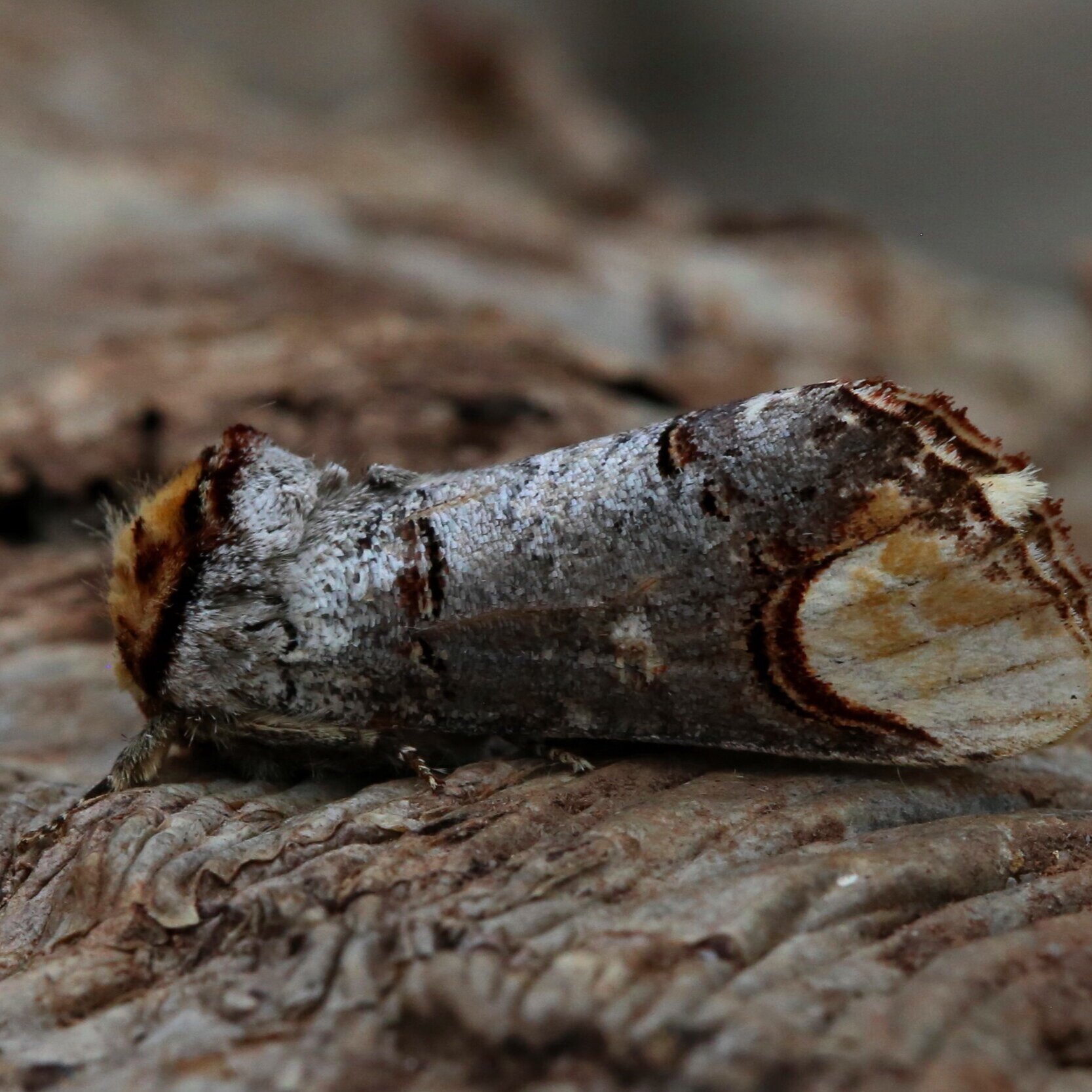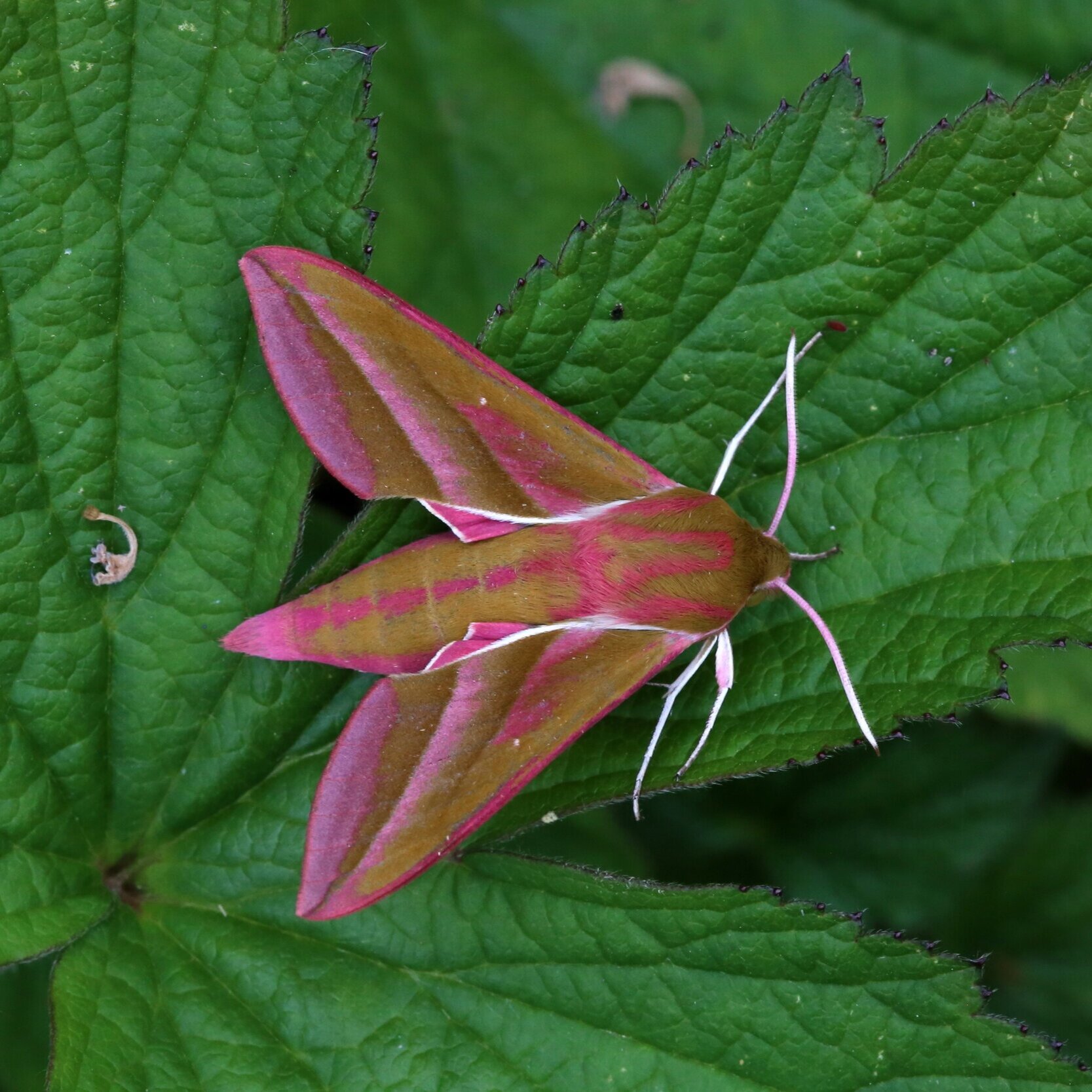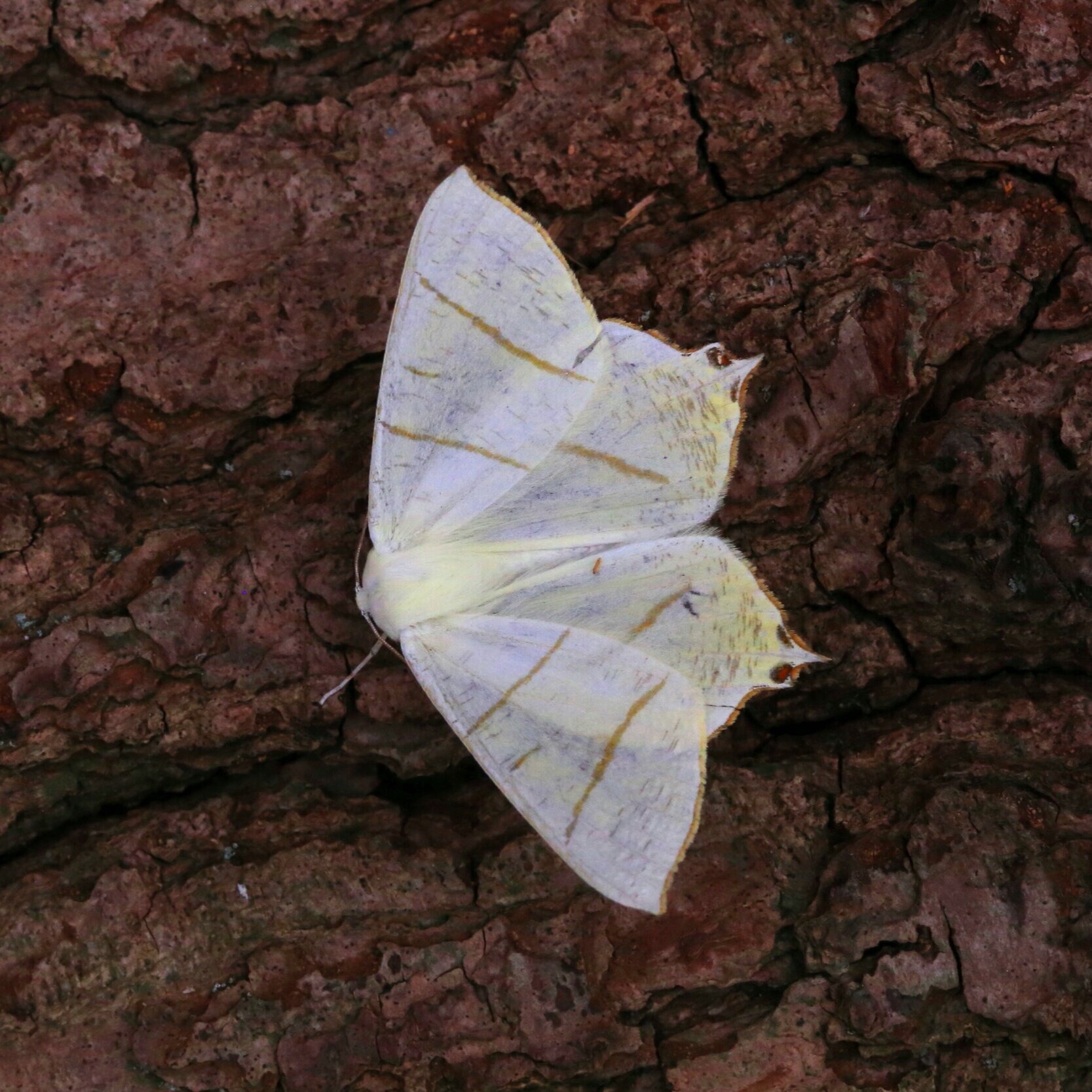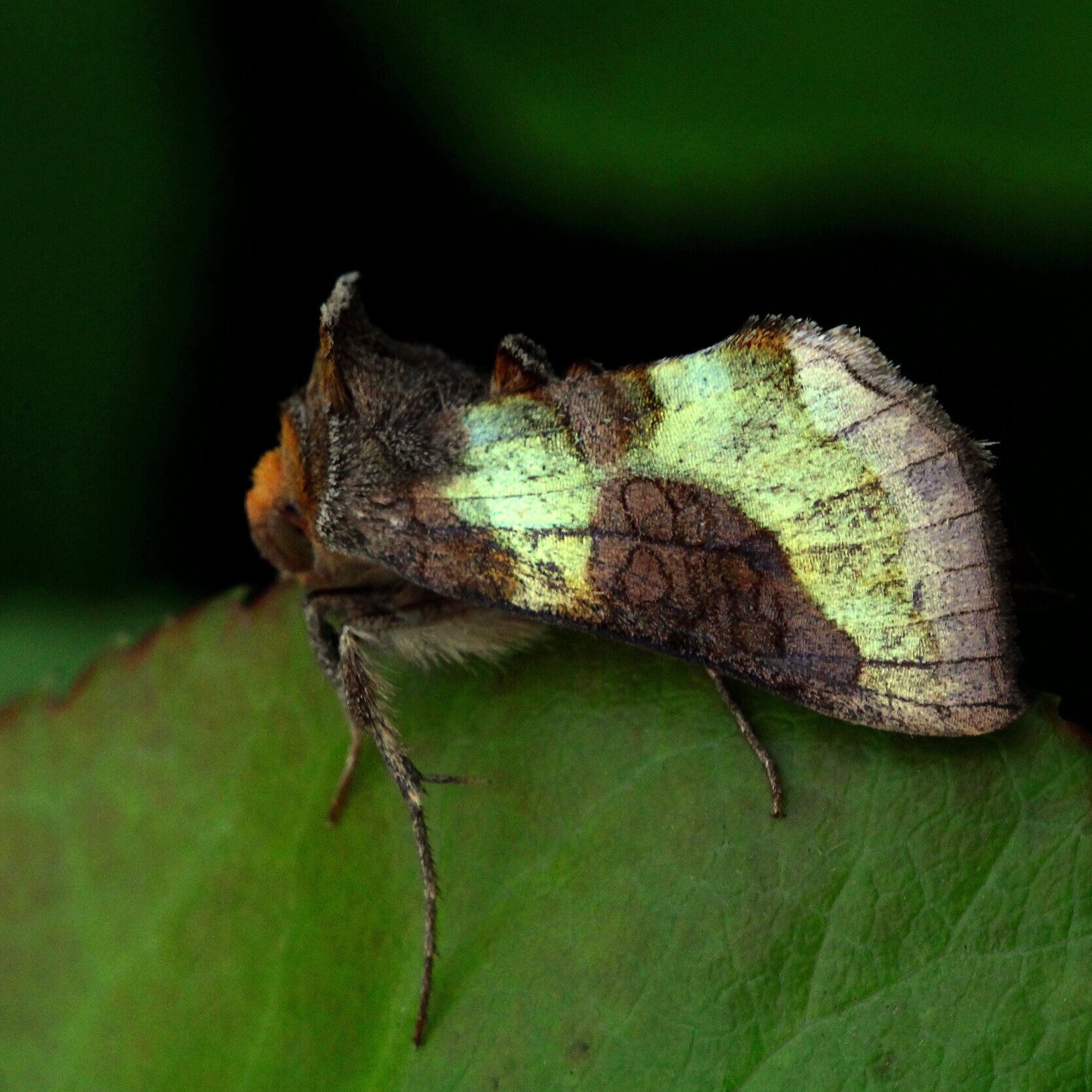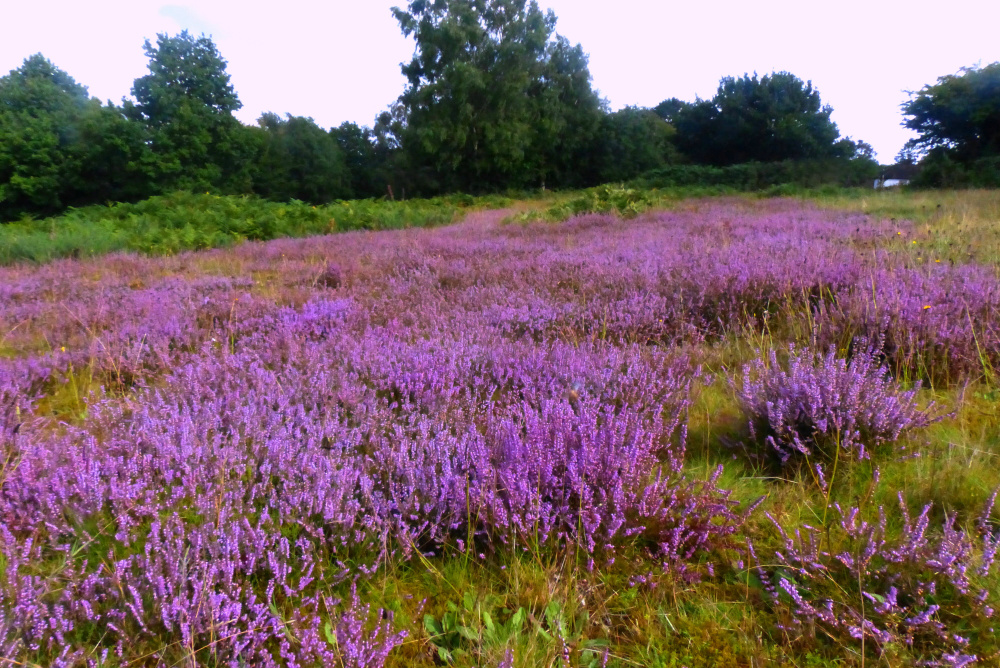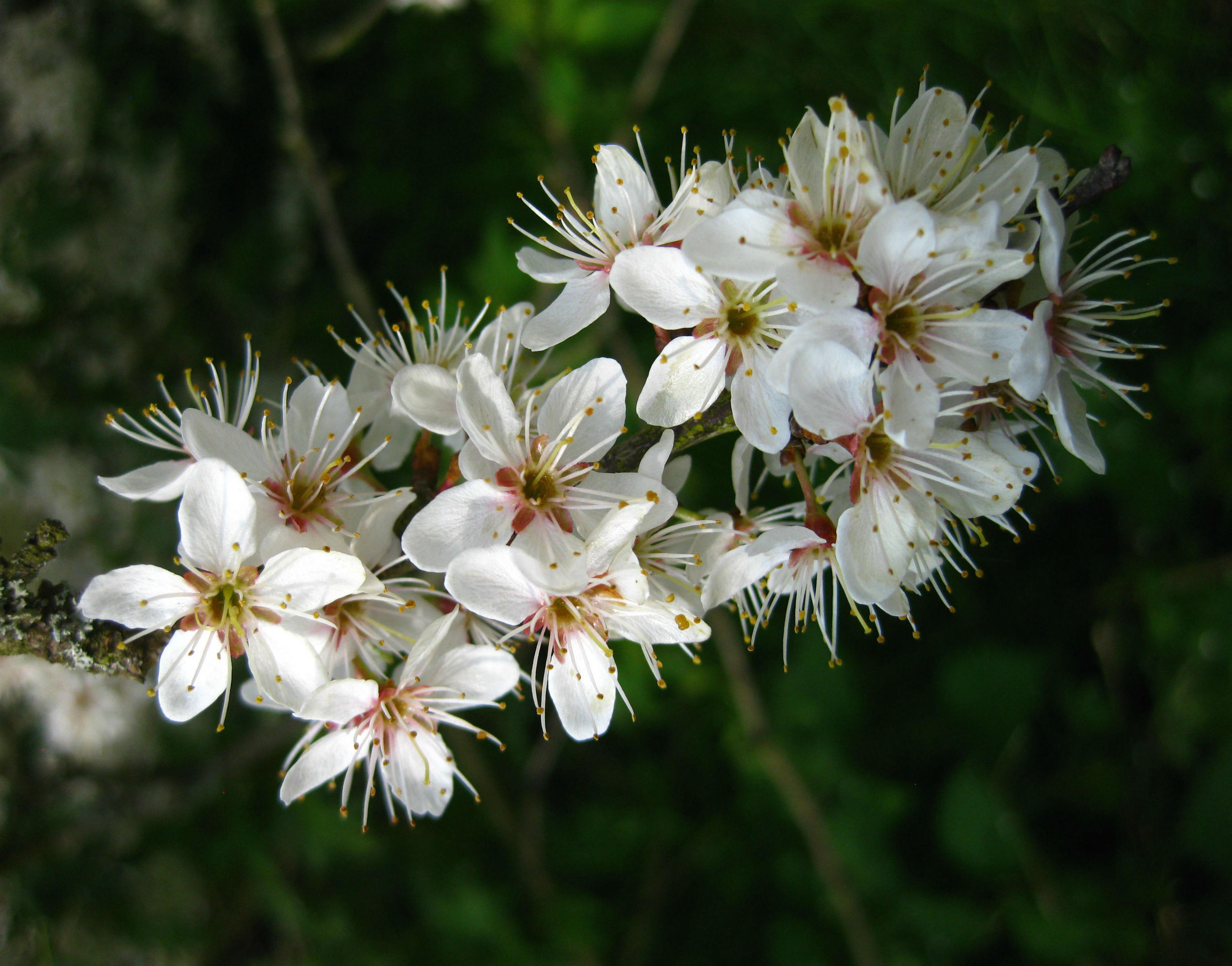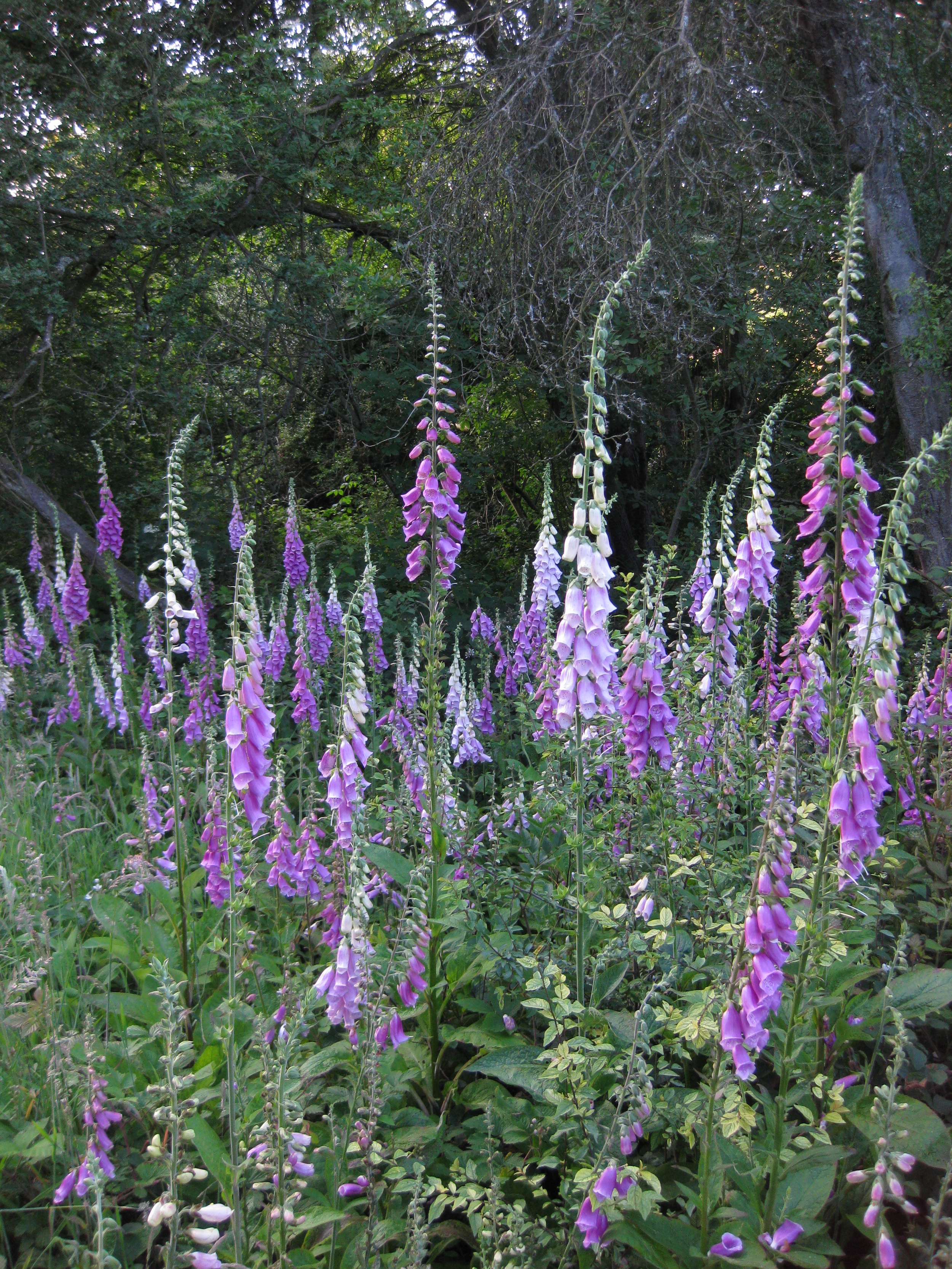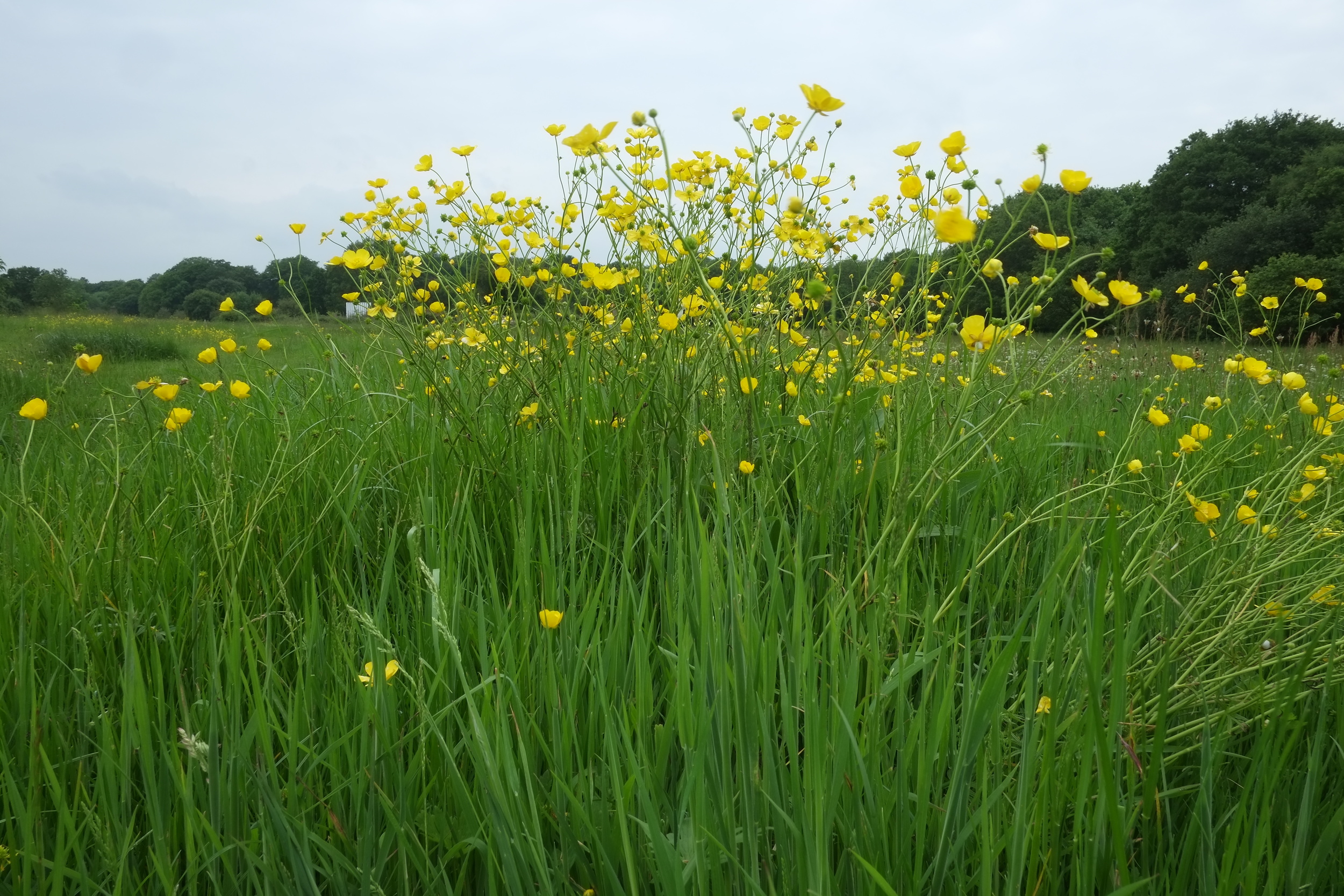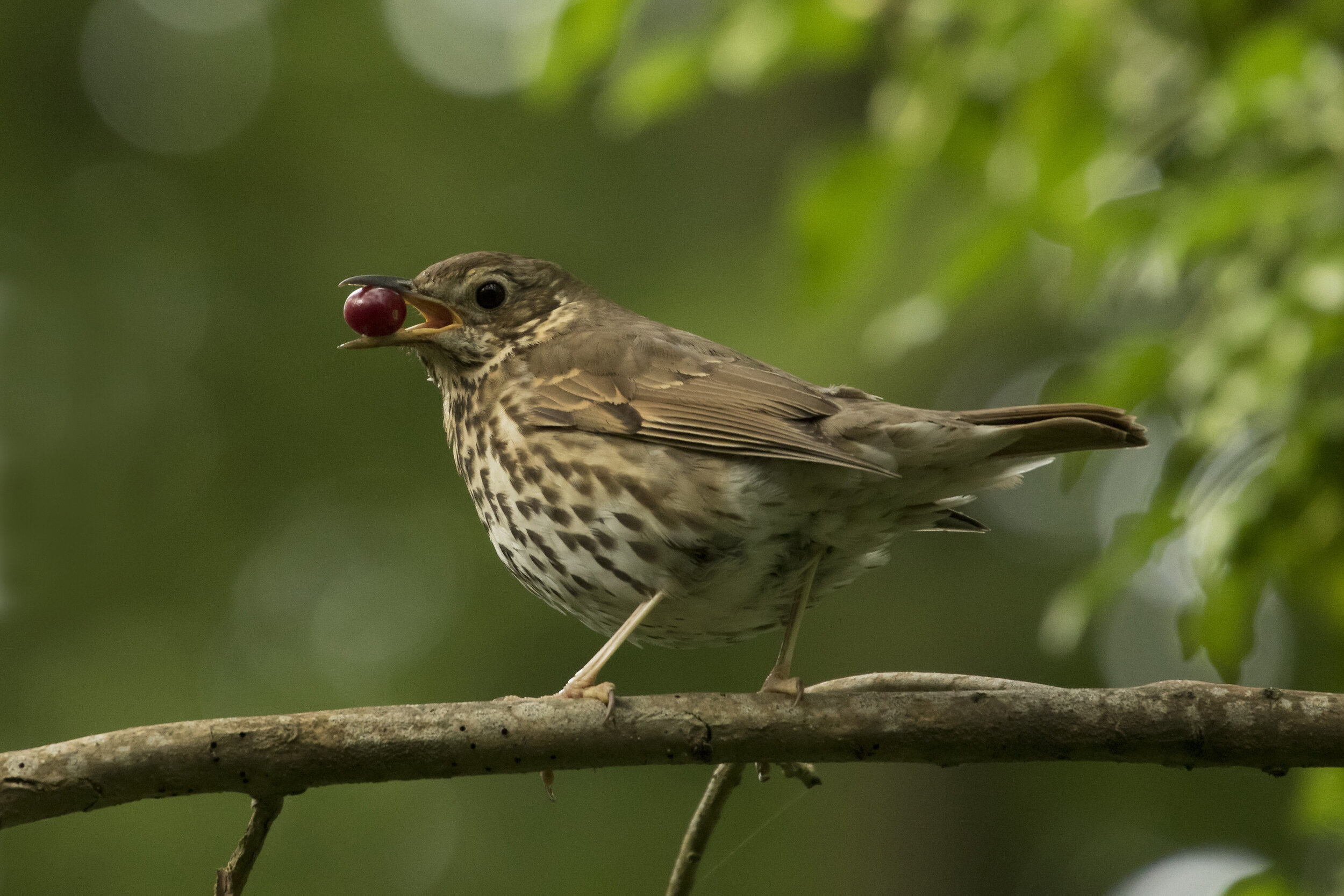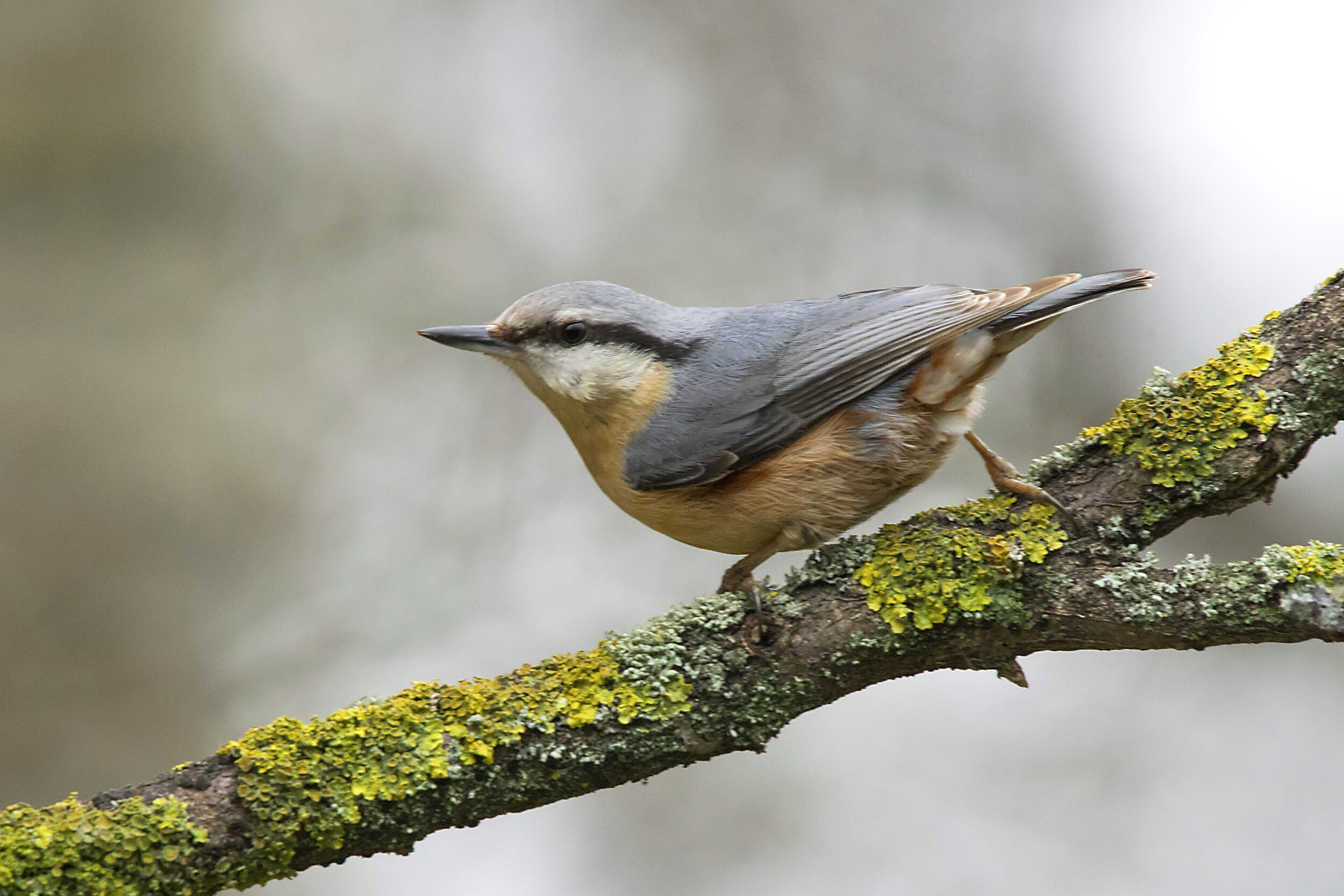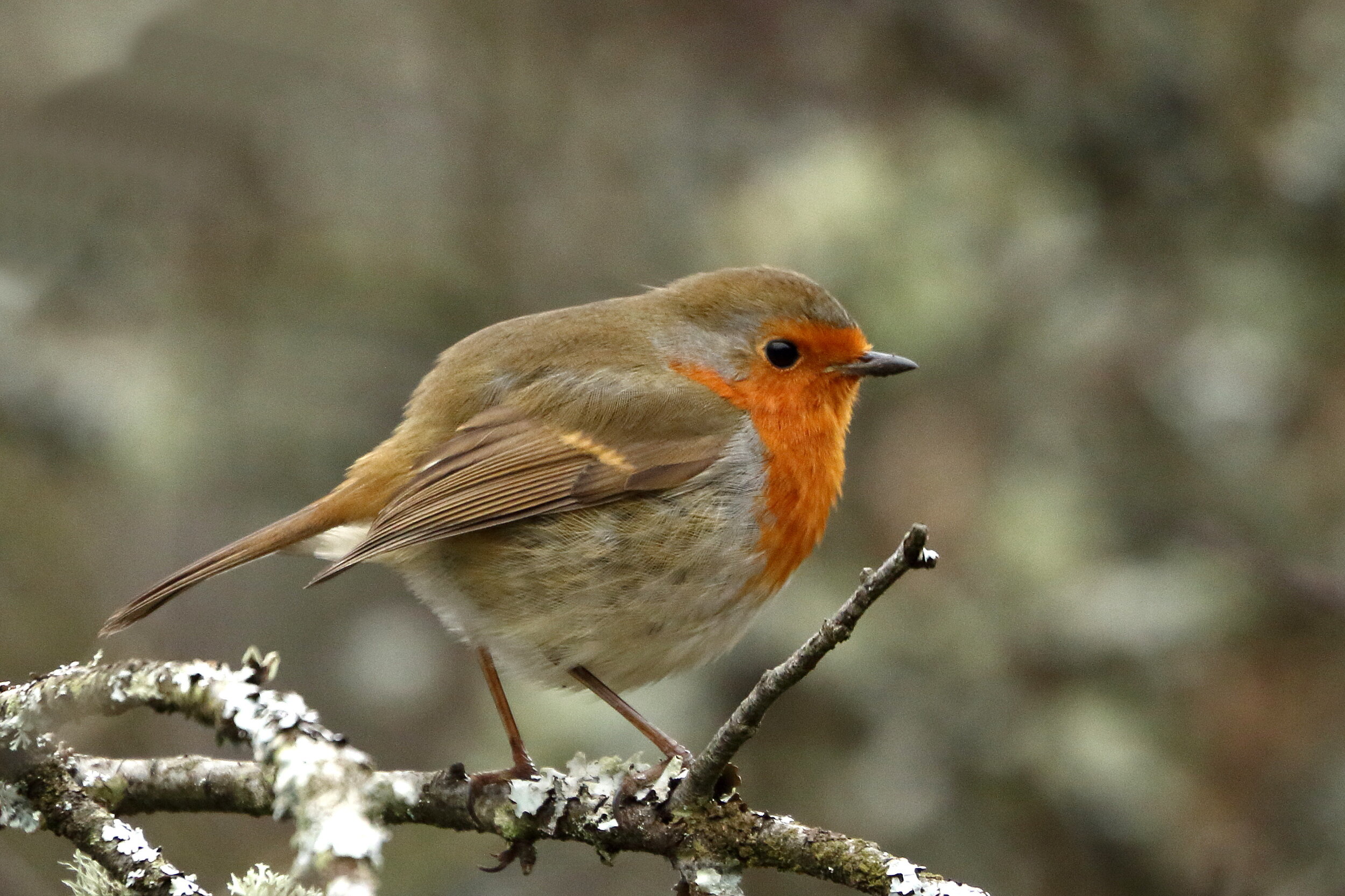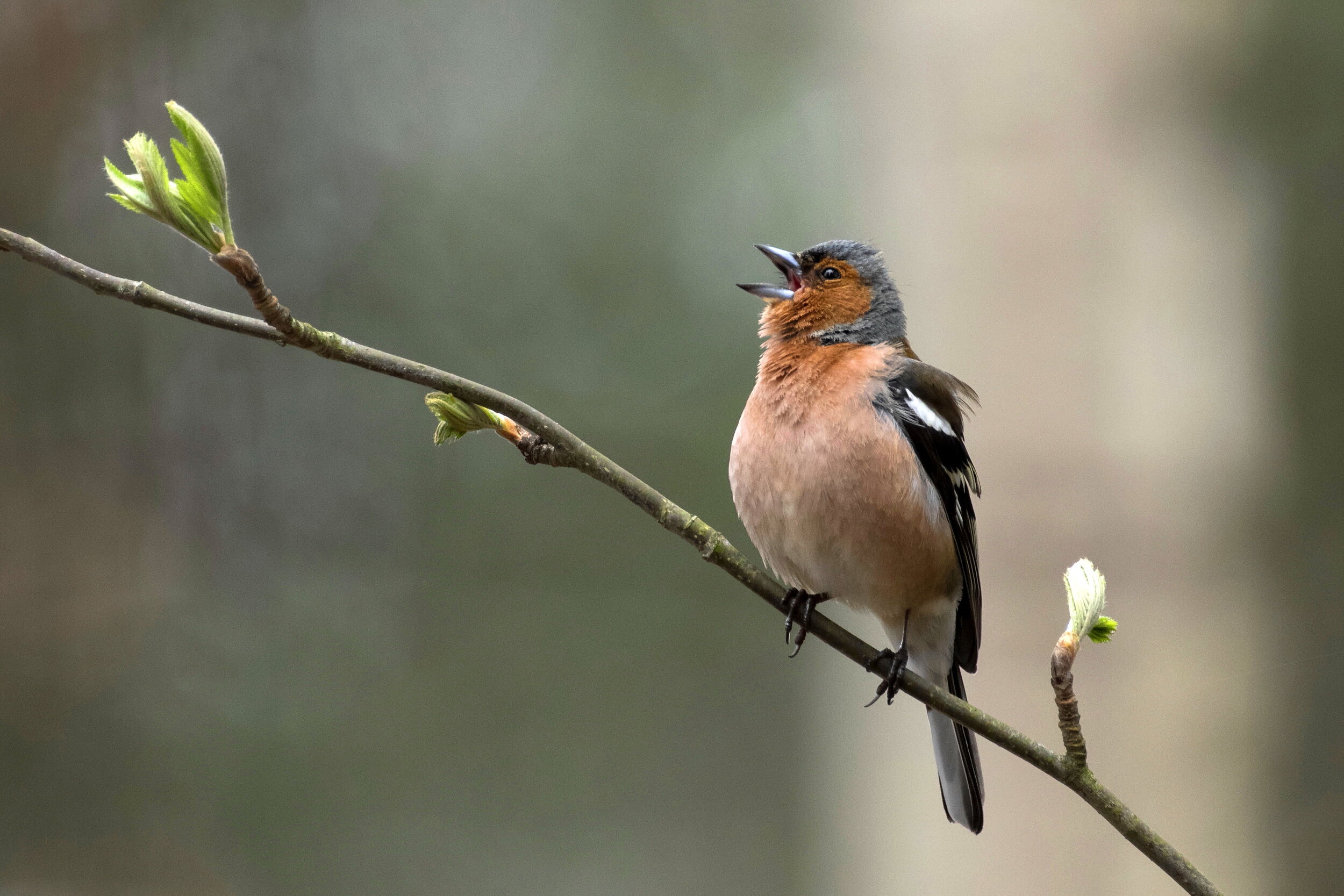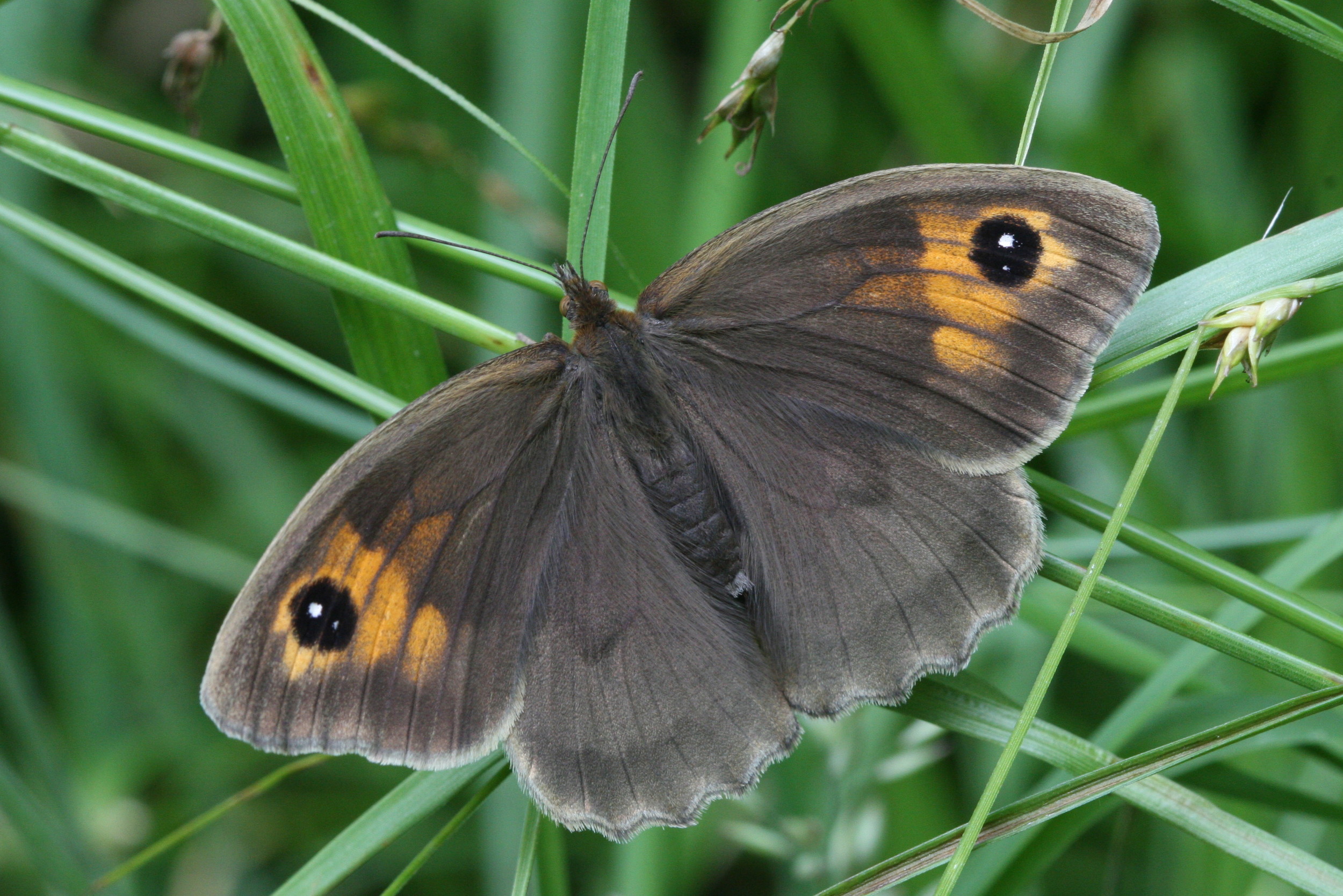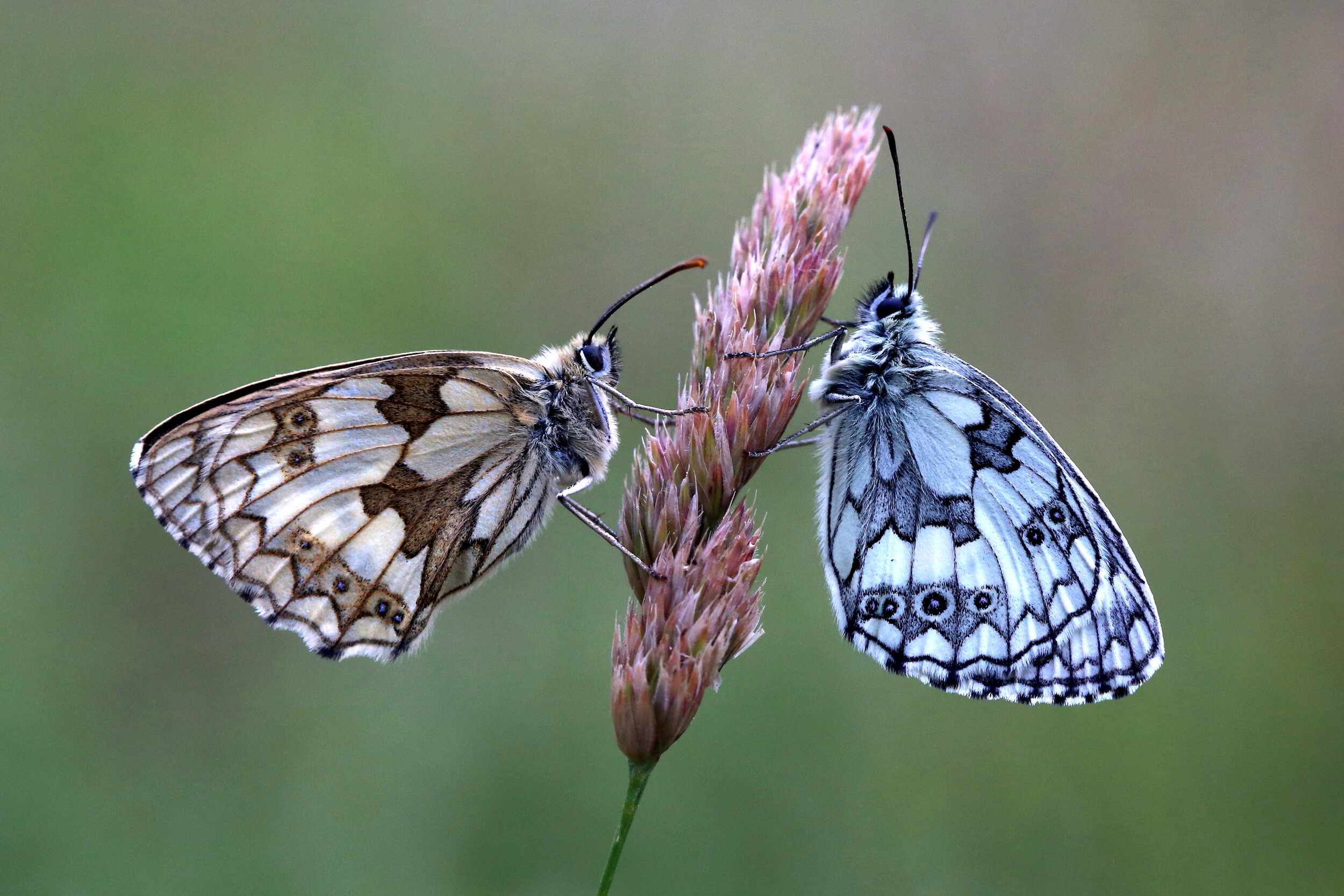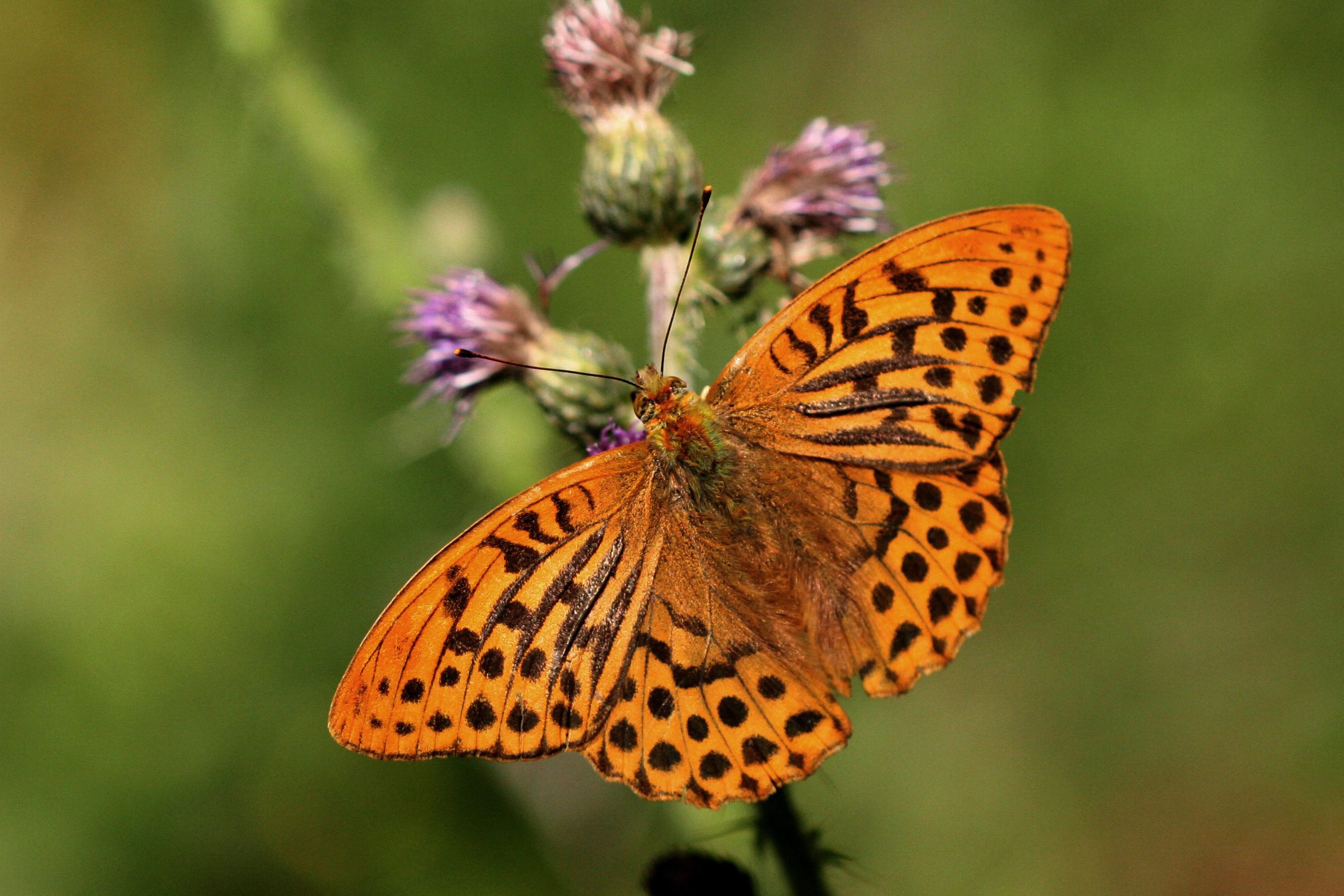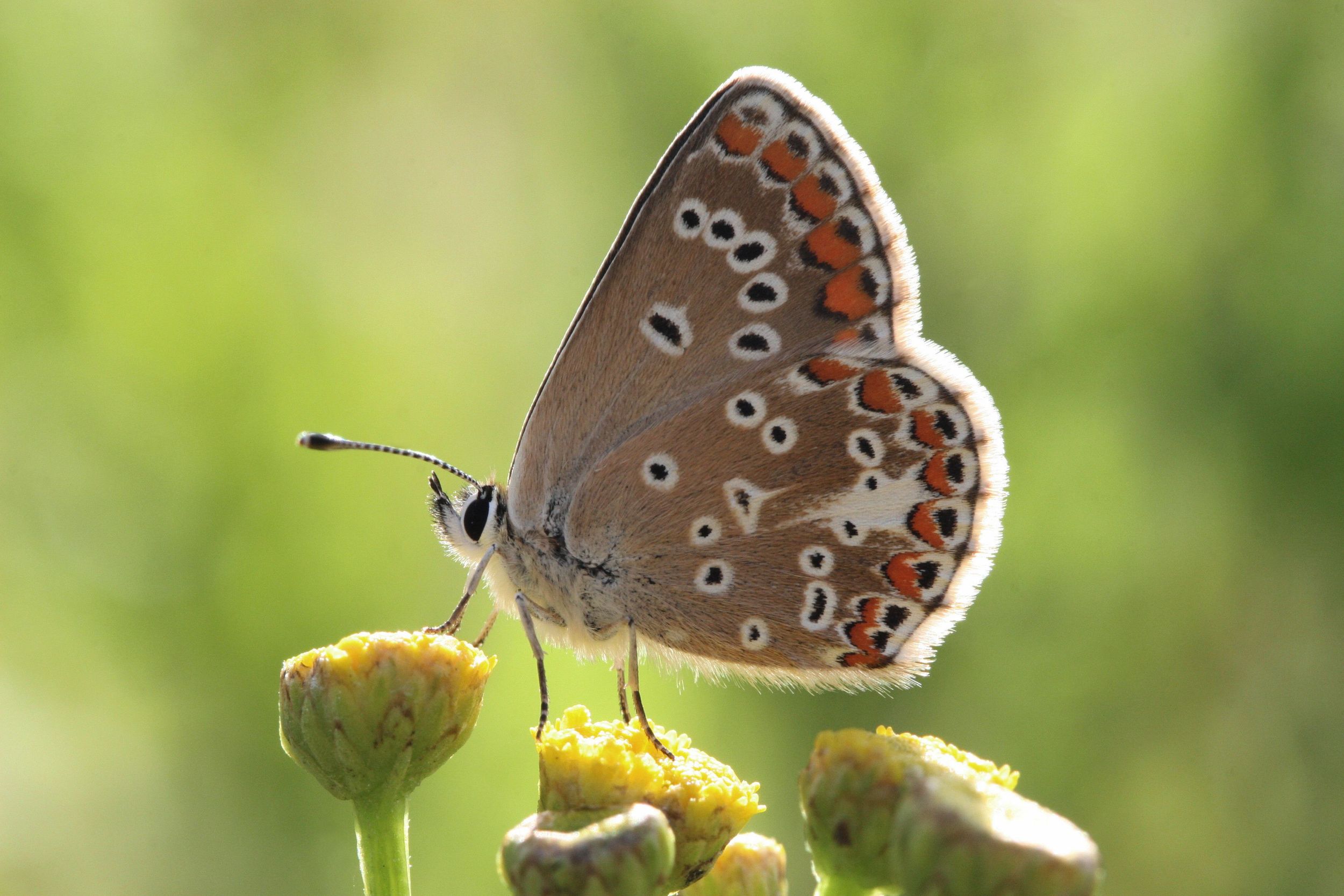Species Surveys
Bucks Invertebrate Group Visit:
Saturday 3rd September2022 was a very busy day on the Commons. Thanks to Fiona Everingham of Bucks and Milton Keynes Environmental Record Centre we were privileged to have a visit from members of Bucks Invertebrate Group who carried out two surveys on the Commons.
The daytime session was led by Martin Harvey, from the UK Centre for Ecology & Hydrology and the evening moth session by Neil Fletcher. Neil has provided us with a provisional list of 62 invertebrates which he recorded during the day but we have yet to receive the lists from other members of the group. Although we have many records of other species found on our Commons thanks to the many people who have seen the importance of observing our local environment and alerting us to changes that take place, other than butterflies and moths we have only very patchy records of other invertebrates and so these will be a very welcome addition to our records.
Evening Session: In the evening, the visiting moth experts chose locations mainly along the bottom ride where they used generators and sheets to attract the moths as we used to do. We have not yet had the results from the visitors’ haul since some of the identification requires dissection or examination of the genitalia of the moth to establish its species.
On both Friday and Saturday evenings, David, Christine and Peter Bygate also set their traps in three of the usual places where there is an available electricity supply, Hawridge Court Farm, Flint Cottage and Mermaid Cottage and on the Saturday alone they trapped over 35 species and have now recorded a massive 325 macro moths and 62 micros on our Commons.
Daytime Session: Attached is the provisional list from the daytime, There may still be some more to add to this list once a few final specimens have been checked, but it currently stands at 114 invertebrate species, plus 15 species of bird.
None of the species is rare in a national context, but some are quite rare in Bucks. The two most notable species for the county are the Heather Mining Bee, usually found on heathlands and therefore not at all common in Bucks. This was recorded by Neil, who is aware of only 10 previous Bucks records, the others being from Stoke Common, Burnham Beeches and Rammamere Heath.
Another bee found was identified as a Black-horned Nomad Bee, which is a nest parasite of the Heather Mining Bee, and in Bucks is even less frequent than its host. The only other Bucks record of this bee is from Rammamere Heath.
A number of other bees were recorded, many from the Heather flowers, and given the less than ideal weather this is a good result for the commons.
Most of the micro-moths on the daytime list were recorded from their leaf-mines, and Neil highlighted his record of Tischeria dodonaea, a leaf-miner on oak, which he says has only a handful of records in Bucks.The gall fly Terellia serratulae makes galls in thistles, but despite having a common foodplant the fly is not very frequent and is another species with few Bucks records.
Moth Survey by David Dennis and Peter Bygate
David Dennis and Peter Bygate carry out moth trapping evenings on the Commons several times a year when the weather conditions are favourable. These evenings are announced on Grapevine and can be attended by local families the following morning to come and see the moths trapped (they are all safely released after being identified and recorded).
A record of the moths that have been seen over the past two years can be found here.
Wonderful photos of some of the moths can be seen on the photo gallery page - Moths along with their names to help you identify them.
Moss Survey by Isobel Clark
Click here to see list of mosses identified on the Commons by Isobel.
Bird, plant and insect Surveys by David & Mary Braddock
Dave Braddock, volunteer warden and bio diversity surveyor at RSPB Hazeley Heath Reserve, and his wife Mary, also a keen naturalist, are kindly undertaking surveys of birds, plants and insects for us. This will enable us to update our records and document change on the Commons over time.
Commons Overview 2019 by David Braddock
It has been a good and enjoyable year for surveys and I will be continuing next year. I don’t expect to add many bird species but there should be quite a few plants and invertebrates to add. It is good to see the mowing has been done, fantastic conditions for the wildflowers next year. The scraping back of the soil around the existing heather will hopefully expand this patch. It will take at least two years to see the results.
Overall the commons are in a good condition. The most exciting work done is the cutting back of the scrub at the bottom of the common and down Stoney Lane. Allowing the track to dry out quicker in Spring is a benefit for walkers and riders and the opening of the ride will improve the area vastly for insects, butterflies and plants. It looks a bit sad at the moment, but it will look good by the Spring. This could be a turning point for the variety and return of species seen on the common.
Areas of note
The places where the grass is cut once, later in the year, have the most species of plants and invertebrates. The cut pathways allow for access and close approach to these species without undue trampling and disturbance.
The bottom hedge line and scrub from Flint Cottage to Palletts Pond is perfect and needs to be protected. Most of the bird, butterfly and invertebrates are found here.
If the Bracken can be controlled and conditions improved so the heather and gorse can spread, this could be an exciting area in the future.
So basically, you all need to support the work of Christine, Lindsay, the committee and the conservation volunteers. They spend money, time and effort trying to make the common a pleasant place for you all to visit and to keep this place special.
Summary Commons Report 2019 – Dave Braddock.
During 2019, surveys were done throughout the year to monitor the state of the Commons. The surveys were done in January, May, July & December. The attached tables show what species have been seen around the Commons from the 1950’s to 2019. Next year I will have time to visit in different months to see if I can catch up with other species on the Commons. Click on title in brown to see lists.
In the surveys I have only included native plants or those that have naturalised in the UK for several years. I have not included garden escapes. I have incorporated the ponds into the same list as they are part of the Commons, not separate, and it stops plants being listed twice. I also have not included any plants that I could not identify positively without further research. They will be added in the future.
Those indicated “yellow” in the column have not been found again yet but are most probably there somewhere. Those indicated “red” in the column are rarities and may not be found again.
· So far, I have found 162 of the 270 native/naturalised plants that have been recorded over the years.
· There are 33 species of grasses, sedges and rushes of the 270 not identified yet.
· 10 new species of plant have been found on the Commons this year.
Plants are not fixed, and some will naturally disappear and reappear when conditions are right over the years. Some of the plants like Harebells are just about hanging on and are likely to disappear. I have no knowledge of fungi, so I have not surveyed them.
There are a huge number of bird species that either breed, Winter or pass through the Commons each year. Some are quite special demonstrating the importance of this site. In the final survey of the year in December there was nothing new to record but it was good to see that the bird species observed back in January have returned for the Winter, so obviously they like the commons.
· 52 species breed on or on the edge of the Commons.
· 14 species Winter or pass through.
· 4 species have not been found yet
· 16 are rare and not likely to be seen again.
This year I have seen 66 of the 86 species recorded on the Commons. Woodcock were found wintering this year in the wooded areas for the first time since the 60’s. “ Green” in the column are breeding birds, “yellow” have not been seen yet, “blue” are Wintering or on passage and “red” are rare and are unlikely to be seen again.
Due to the diverse nature of the Commons, the number of butterfly species seen are very good and sometimes seen in great numbers. White Admiral were seen this year, the first recorded in 23 years. David Dennis monitors the moths of the Commons, so I did not survey for these, but I did find several Scarlet Tiger Moths in July, which are new to the Commons. Overall, I found 25 species of the 29 species recorded over the years.
I missed seeing Purple Emperor this year, but several were seen by other residents. “Yellow” in the column have yet to be found. “Red” in the column are rarities and not likely to be found again.
11 species of mammal were found this year, but without setting small mammal traps, the list is not going to be bigger. I did 2 bat surveys in July and it was good to see that there are 4 species of bats flying around the Commons. Common and Soprano Pipistrelle bats are quite numerous, a Noctule bat and 2 Brown Long-eared Bats were found.
There must be thousands of invertebrates on the Commons. My knowledge only extends to the common and easily recognised species. This will be an ongoing learning exercise I feel. I have managed to identify 76 species so far.
Hawridge and Cholesbury Common Spring Survey: 4th and 5th of May 2019
Spring decided to take a back seat on our May Bank Holiday weekend visit. North winds, frost, rain and sleet and a day time temperature not rising above 7c greeted us both days. The birds were not put off with most of the birds seen last time showing signs of breeding.
Summer migrants had started to arrive and several species missed last time were found this weekend. 46 species were seen and 14 new species were added to the total seen around the Common in 2019, which now stands at an impressive 55 species.
Three other surveys were planned this visit, Wildflowers, Invertebrates and bats. The surveys will not record all of the species found on the Common. I expect some will be missed if not seen at the time.
The bat survey was cancelled until later as it was too cold to have any flying but David Dennis did have a bat flying over the Full Moon Pub.
It will be good to see what wildflowers and invertebrates are found around the Common as the season progresses. I will only be covering the native wild flowers/trees and shrubs, not ones that were most probably garden escapes or planted. I expect to find that some species that had been recorded before will no longer be there. Also I expect I will find some species that have not been recorded before or not seen for several years. Plants come and go depending on the conditions at the time. Usually there is a seed bank in the ground and when the conditions are right again they will return. I will try to keep to the Common English names where possible to make it easier to follow.
The findings so far from the tree/shrub and wild flower survey show that there are many species on the Common that you would expect to find in Ancient woodlands and old Commons. Quite a lot of these were used as medicinal plants in years gone by and several have interesting old English names. 85 species have been identified so far. It will take time to cross reference these with what has historically been seen so a full report should be ready next time.
The invertebrate survey got off to a slow start due to the cold weather, this should pick up as the weather gets warmer. 14 species were found and identified despite the cold and wet. The highlights of the survey were six species of Bumblebee found on the Common, and several Hairy-footed Flower Bees were also seen in the sunny areas. I hope to be around in July so the numbers found and identified should rise.
Commons Management Observations
Maintain and keep/encourage scrubby areas including bramble scrub. Vital habitat for the important species on the Commons.
Clear the heavily overgrown area on the triangle patch where the interesting plants were found a few years ago. Grid Ref- SP932074 approx.
Leave standing dead wood if away from paths, an important habitat.
Don't clear up fallen/dead wood under trees. It's an important part of woodland management. No need to clear up and do gardening.
Keep a reedy edge and open water on Palletts Pond as you have at present.
Hawridge and Cholesbury Common Winter Bird Survey: 4th and 5th of January 2019.
A pleasant, 2 day bird survey, in cold but dry conditions was conducted around the Commons on the 4th and 5th of January. A fantastic 41 species of bird were seen or heard over the 2 days and 5 species of mammal were found. I have produced a spreadsheet of species recorded at the end of the report but the highlights and interesting finds are below.
A Woodcock was found in the leaf litter in the trees at SP 93741 06966. It will be good to see if woodcocks are found to breed on the Commons in future surveys or just over-wintering birds. It is unusual to just find one so maybe there were others not seen or found. It was good to see Bullfinches and Marsh Tits over the Commons in suitable scrubby habitat, both were seen in double figures.
The various apple trees throughout the Commons were providing a much needed food source for Winter thrushes, with flocks into three figures, mainly Redwings but a good number of Fieldfares. Interestingly there were several continental Blackbirds feeding with them.
Pallets Pond is an interesting area on the Common. As it was the main piece of water on the Commons, several common woodland birds were seen drinking and bathing around it, the highlights were several Siskin and a female Brambling, a bird from Scandinavia that over-winters in small numbers each year. Several Ravens were seen flying around and over the Commons during the two days. Ravens are spreading out from their normal range, so it was good to see them here.
Commons Management Observations
Maintain and keep/encourage scrubby areas including bramble scrub. Vital habitat for the important species on the Commons.
Leave the fallen apples on the ground/don't clear up. A good food source for the birds and invertebrates.
Leave standing dead wood if away from paths, an important habitat. Don't clear up fallen/dead wood under trees. It's an important part of woodland management. No need to clear up and do gardening.
Keep a reedy edge and open water on Palletts Pond as you have at present.

